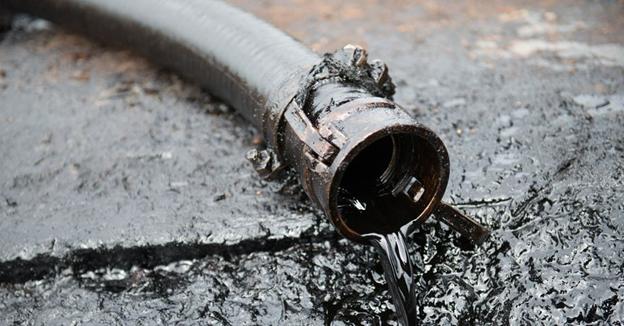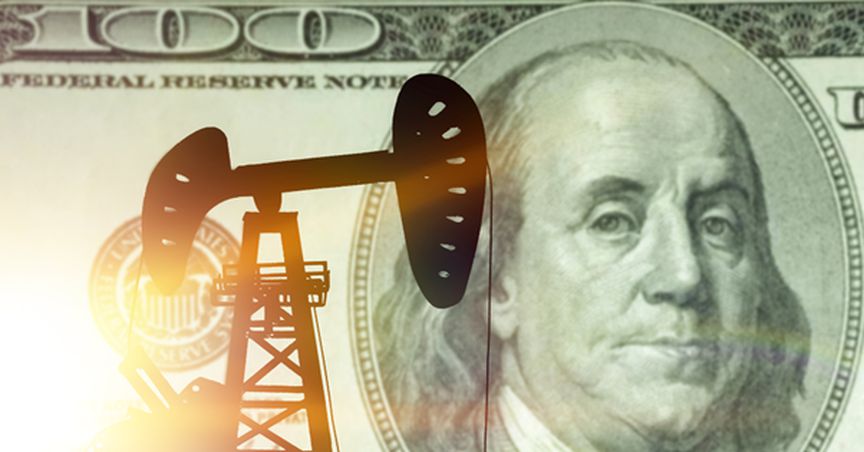Summary
- Advancements in oil and gas drilling technology have unlocked huge reserves of oil, earlier untapped by oil and gas players.
- Shale oil is crude oil occupied in the void spaces of shale formations beneath the surface of the Earth.
- Hydraulic fracturing is required to create a conduit between the reservoir and the well to facilitate the movement of oil into the well.
- Shale oil is highly capital intensive and requires a higher crude oil price regime to be produced profitably.
- Environmentalists around the world have warned about the possible intrusion of fracking fluids into the groundwater, making it unfit for drinking.
Shale oil and gas are hydrocarbons that are trapped within shale formations. Shale is essentially a rock type that is characterised by relatively lower permeability. The low permeability of the shale formation restricts the movement of oil and gas out of the formation.
Due to this fact, traditional oil explorers refrain from drilling a vertical well as only low surface area is available for oil extraction, and shale is normally deposited in thin layers.
Read here: Strong Chinese industrial output to drive crude oil prices higher
With technological advancements in the oil & gas space, and the advent of hydraulic fracturing and oil rigs capable of drilling horizontal wells, shale oil has emerged as a hot target. The concept involves drilling a horizontal well that can run inside the formation and provide maximum exposure to the well. At this stage, hydraulic fracturing comes into play to break open the permeability of the formation, which increases the flow and thus delivers higher output.
The hydraulic fracturing technology is complex and highly capital intensive. Also, this work results in groundwater contamination. Several environmentalists are running campaigns against the process. Few reports have also highlighted how hydraulic fracturing caused low-intensity earthquakes in the vicinity of oil fields, where the fracking job was performed in the Netherlands.
Good Read: Are rising Crude Oil Prices a concern for energy hungry nations?
It is no hidden fact that the oil industry is highly sensitive, and any news coming from OPEC countries, or the US manages to cause price fluctuations. Even the stockpile news from the US strategic reserves significantly impacts the price of the commodity.
The impact of COVID-19 was devastating for the oil industry. The demand vanished during the onset of the pandemic, and the prices bottomed to nearly ~US$20/bbl. The futures price for the month of May 2020 traded in negative values.
Oil and gas projects around the globe were shut down immediately. Also, oil players embarked on the projects with low break-even cost and less capital intensity. This led to the closure of several deep offshore and costly shale projects. There was no profit from the operations due to the availability of cheaper crude in the market.
Also read: A look at Crude oil’s sensational journey from Black April to April 2021
An estimate from the US oil industry states that shale oil is economically feasible if the crude oil price remains well above the US$50-60 per barrel range. The average per-barrel cost of crude oil from conventional reservoirs is much lower in onshore fields. For the Middle East, the average per barrel cost is around US$8-20, with the lowest in Saudi Arabia at ~US$3/bbl.
So, the big question is why anyone would produce costlier oil when cheaper alternatives are available? Well, this question has more than one correct answer. First is lower dependency on imports, second could be stated as geopolitical issues between countries, and the third reason could be to support the oil infrastructure in order to produce domestic oil economically when prices soar to record highs.
Interesting Read: Oil Price Volatility: Is Commodity Super Cycle Out of Order?
Meanwhile, let us have a look at the factors threatening the shale oil market:
- Crude oil demand and price
The WTI crude is hovering in the range of US$60-65 per barrel. The demand is heating up after a year of sluggish demand since the onset of the pandemic. As the coverage of vaccine will increase among the general population, there will be lower restrictions on travel and economic activities.

Copyright © 2021 Kalkine Media
But the crude oil prices are expected to stay range-bound for a longer period of time. OPEC countries have not revised their production quota and are currently producing lesser than their potential. Eventually, more crude oil will be added to the supply stream from the Middle Eastern countries and Russia, which will prevent a steep rise in the prices in the event of increased demand.
Good read: Oil prices jump with hope of rising demand
- Legislation on banning hydraulic fracturing
Last year, a bill to ban fracturing was proposed to the Congress in the United States. Several countries in the European Union have already imposed a ban on the process. With bans and strict regulations in place, such operations are unlikely to receive funding.
Only a few of the major oil and gas players are financially sound to self-finance such projects. But they are also expected to succumb to the social and environmental pressures and look out for conventional projects.

Source: Anan Kaewkhammul, Shutterstock
- Major challenges amid green revolution
After the Paris Agreement on climate change, a global effort is underway to replace hydrocarbon, whether it is natural gas, crude oil, or coal with renewable sources of energy.
The EU is leading the way to show that a world without fossil fuel is possible. Renewable energy projects are cropping up steadily, and the EV market segment is picking up. Most of the countries that have signed the agreement have set a deadline to become carbon neutral by 2050 or reduce their emission levels to the minimum.
To leverage the change in the energy scenario, even the major oil and gas companies like BP, Royal Dutch Shell, Repsol and Equinor have joined the renewable energy bandwagon. In the long run, the transportation sector may move from gas-guzzling engines to silent battery-operated motors in their vehicles.
Read more: How a rebound in oil prices is impacting ASX energy stocks



